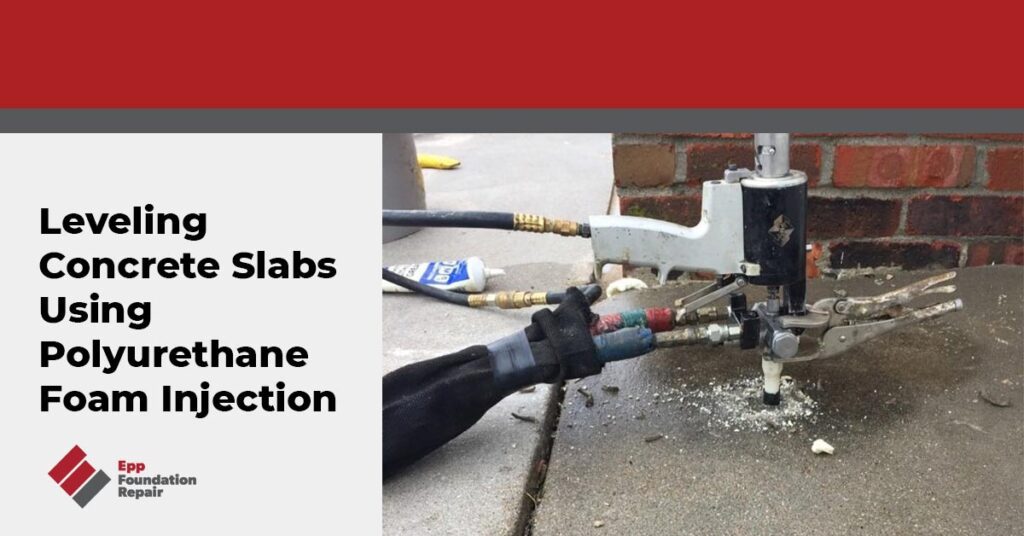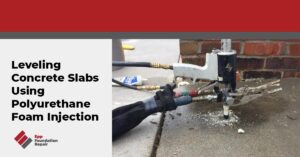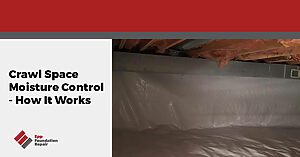Looking for information about leveling concrete? If so, don’t hit that back button because you’re in the right place. In this article we’re going to discuss what leveling concrete is, how it’s done using polyurethane foam injection, why concrete becomes unlevel, and more.
What Is Leveling Concrete?
Leveling concrete means injecting something under a sunken, uneven concrete slab in order to raise it back up. This might be a sidewalk, driveway, pool deck, garage floor, patio, or some other type of unlevel concrete slab. Leveling concrete is less expensive and time consuming than ripping up the slab and pouring a new one. Most jobs can be completed in just a few hours.
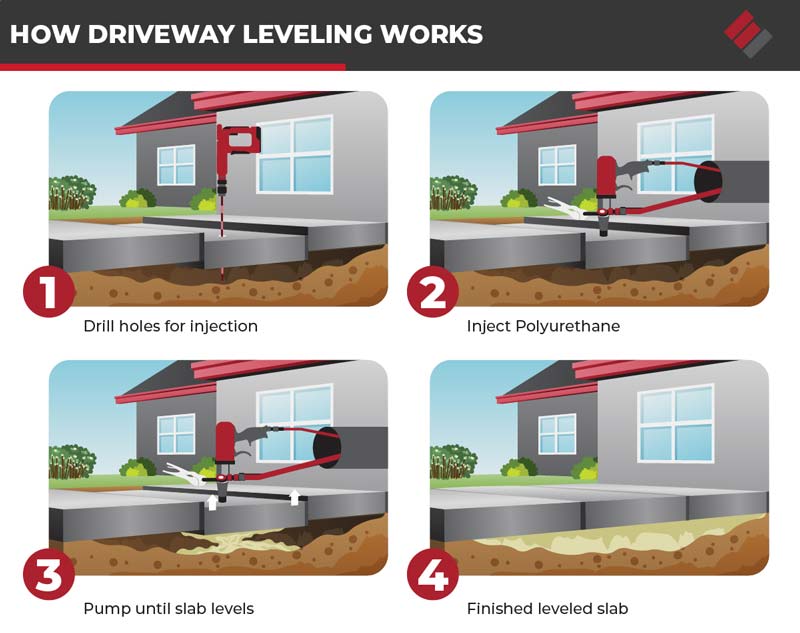
Leveling Concrete Slabs Using Polyurethane Foam Injection
Most concrete leveling jobs today are done using polyurethane foam injection. The leveling procedure is generally as follows:
- Small, dime-sized holes are drilled into the affected slab.
- A nozzle is inserted into the holes and a two-part polyurethane foam is injected under the slab.
- The foam immediately begins to expand and as it does, it raises the slab.
- When the lifting is done, the holes are patched using a compound that matches the color of the slab.
- Approximately 15 minutes after the repair is complete, the slab is ready for use again.
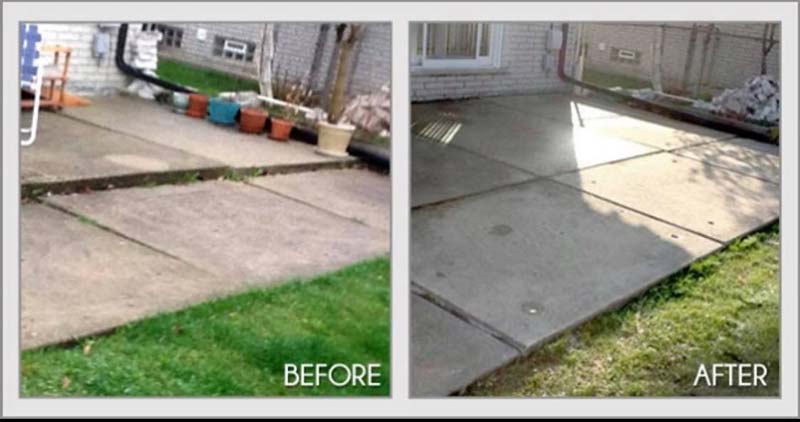
Other Methods For Leveling Uneven Concrete Slabs
While the most common way to level an uneven concrete slab today is polyurethane foam injection, in the past leveling concrete was done via a procedure called mudjacking. (Mudjacking is still being used today. However, it’s not as common as it once was.)
Mudjacking involves injecting a cement slurry (cement, soil, sand, etc.) under the uneven slab in order to raise it. The procedure is similar to polyurethane foam injection:
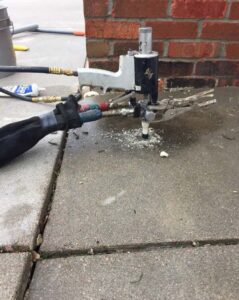
- 1.5-3 inch holes are drilled into the affected slab. (Note that these holes are quite a bit larger than those needed for polyurethane foam injection.)
- A nozzle is inserted into the holes and the mudjacking slurry spreads out to fill any voids and lift the slab.
- When the lifting is complete, the holes are patched to match the concrete.
- The mudjacking slurry now needs time to dry and harden.
Although mudjacking has been in use for a long time, one of its cons is that it’s subject to erosion due to the fact that it contains material like soil and sand. It’s also quite heavy. If the slab became uneven because the soil was having trouble supporting it, adding more weight in the form of a cement slurry isn’t going to help things. In fact, it could even make the problem worse.
Why Does Concrete Become Unlevel?
Concrete slabs can become unlevel for various reasons including:
- Expansive soil – Expansive soil contains a lot of clay and because of this, it expands when it soaks up moisture and then shrinks when it dries out. This swelling-shrinking cycle creates movement under the slab and can, over time, cause it to become unlevel.
- Erosion under the slab – Drainage problems along with erosion-prone soil could cause voids to form under the slab. If the slab sinks into the voids, it will become unlevel.
- The soil wasn’t compacted before the slab was poured -Soil needs to be adequately tamped down before a slab gets poured on top of it. If this isn’t done, the new slab could settle into the soil and become uneven.
- Organic material under the slab has decayed – If leaves and other organic material under a slab decay, voids will form and cause an uneven slab.
- Invasive tree roots – We’ve all seen examples of tree roots pushing up on a sidewalk or driveway and causing it to become uneven.
Read more about – Concrete Driveway Leveling
Is It Expensive To Level Concrete?
Concrete leveling using polyurethane foam injection is less expensive than digging up the uneven slab and pouring a new one. It’s also a lot faster. Most concrete leveling jobs can be completed within a few hours and then the slab is ready for use again.
Is Concrete Leveling Better Than Replacing The Slab?
Concrete leveling using polyurethane foam injection is less expensive than tearing up the slab and pouring new concrete. The only time it’s really necessary to dig up and replace a concrete slab is when the slab is severely damaged.
Concrete leveling with polyurethane foam injection is also a much faster repair. Most jobs can be completed in just a few hours and then your sidewalk, driveway, or patio is ready for use again. When you replace a concrete slab there’s always a certain amount of downtime as you wait for the freshly poured concrete to dry and harden.
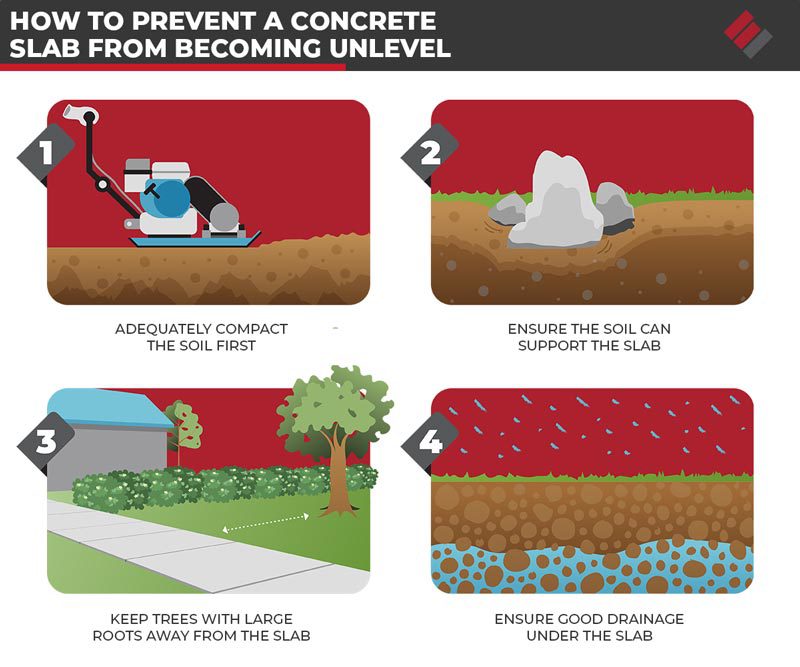
How To Prevent Concrete Slabs From Becoming Unlevel
You can prevent an existing concrete slab from becoming unlevel by ensuring there’s good drainage in the soil under and around the slab. This is especially important if the slab is on top of soil that’s expansive or prone to erosion. You’ll also need to keep trees with invasive root systems away from the slab.
If you haven’t yet poured the slab, you can prevent trouble later by making sure the soil is strong enough to support the slab, by ensuring there’s no organic material in the soil and by making sure the soil is adequately tamped down.
If you need help with leveling concrete and you’re in our service area in Nebraska, Iowa, Kansas, or Missouri, contact us today and schedule an appointment for us to come out and evaluate your uneven slab.

